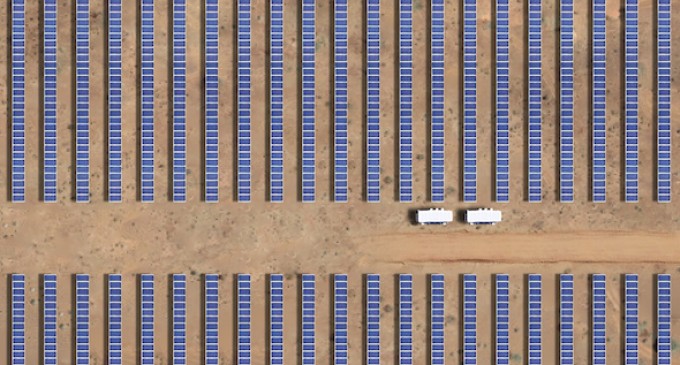“This project was attractive because it is the largest off-grid project with a private PPA,” reports Romain Desrousseaux, Deputy CEO at Neoen. The IPP is providing the construction equity and will be the long-term owner-manager of the innovative 10.6 MW solar PV farm for the DeGrussa Copper-Gold mine in Western Australia.
The solar project, which is currently under construction, will be coupled with a 6 MW battery facility to power the off-grid mine. Neoen acquired the project from Juwi who has incepted it and is providing the engineering, procurement, construction and O&M services.
Neoen’s Desrousseaux is joining global mining and renewables leaders in London on January 28-29 at Energy and Mines London Summit to present an update on this landmark project. Here, he provides insights on the attractiveness and challenges of financing and owning one of the first off-grid PV projects for a mine that incorporates storage.
Q: What was attractive about this asset and how does this acquisition fit into your strategy as an IPP?
A: Our strategy is to invest in renewable energy projects and keep them for the long-term. We are an equity provider but also an operator so we want to operate the asset and keep it running over the long-term.
This project was attractive because it is an off-grid project with a private PPA. For Neoen, it is very exciting to work on all the different aspects of connection and operation etc. for a very small grid with a storage requirement, as well as learning about working in a mining environment. Furthermore, when you operate with a private party, you do not have necessarily all the covenants that governments and utilities have and it is an important learning curve.
Q: Can you give us an update on the project?
A: The construction is progressing well. We have all piles rammed into the ground, trackers to carry the panels, and half the panels are already on-site. We will soon start the installations of the panels and are planning to have that completed around February. We are having good cooperation with the mine (Sandfire Ressources NL) who is providing logistical support and as the site owner is ensuring compliance with all the legal requirements.
The other aspect of the project is the technical interface between the PV electricity generation, the storage and the existing fuel generation to ensure smooth running of the mine. That is a key element – ensuring that we can cover any rapid loss of PV production with the storage capacity. Indeed, the requirement from the mine is to ensure that the PV production and the storage work well to avoid any downtime.
We will optimize this interface to increase PV production, minimize fuel consumption, while keeping the same reliability. Based on this first experience, we will optimize the design and the protocols to reduce the storage component and make further projects as cost competitive as possible since storage is still very expensive.
Our aim is to start injecting electricity at the end of the first or second quarter of 2016 and to operate until the end of mine life which is currently 7 years.
Q: How did you address this mine-life challenge in terms of financing and project payback?
A: It is a challenge. The mine life was too short so the Australian government has subsidized the project through a grant given by the ARENA agency and our hope is that the first project will give us enough experience to replicate it without the grant.
I don’t think we need much more than 7 years of mine life. Our ability to take some risk as an investor, and a part of our profit, is linked to our hope that the mine will continue longer than what is currently planned. We as the equity investor have acknowledged that the mine would need to continue beyond the estimated time frame to fully leverage our investment.

